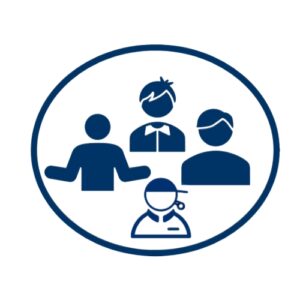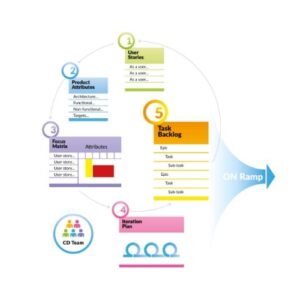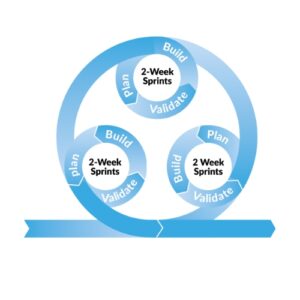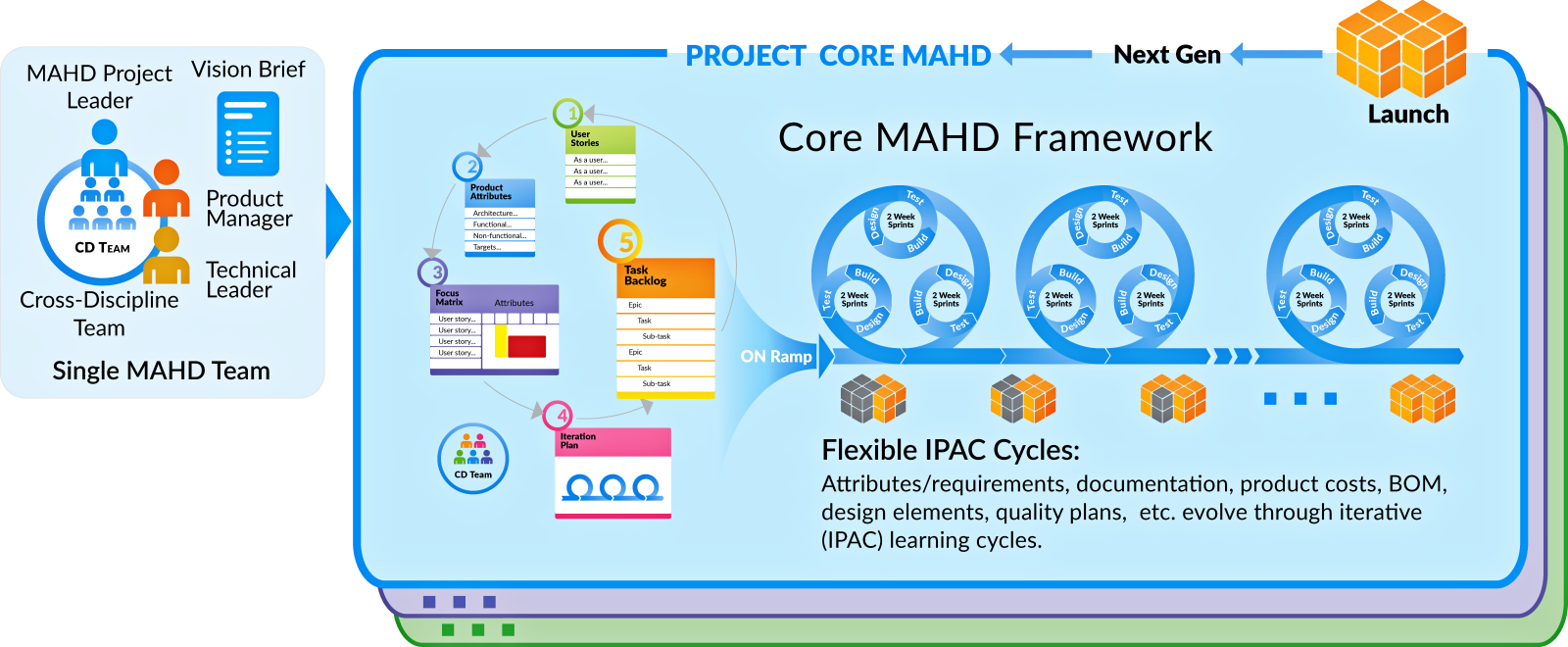The primary focus of the MAHD Framework Core is to effectively manage development projects from concept to launch while adhering to Agile principles. To meet the needs of hardware development, the MAHD core provides specific methods and tactics to:
The MAHD Framework Core provides specific tactics to develop the solution through rapid learning and execution cycles, while guiding execution to completion. The framework can be scaled to manage projects ranging from simple cost reductions to complex systems.

How to organize teams for project success considering the cross-discipline needs of hardware-based solutions as well as how key roles in product management, project management and functional leadership need to be refined and reconsidered in an agile way-of-working.

The MAHD On-ramp is a series of collaborative activities for kicking off an agile project in the right direction. It includes algning on the strategic objective of the project, priorities customers and outcomes, defining a solution skeleton and algning on project success factors... culminating in a plan for success in a matter of days or weeks.

After the On-ramp is complete, team execute projects by establing clear IPAC (Integration, Prototype, Algnment & Customer) Iteration milestones through Iteration planning, update their backlog and then execute tasks in two-weeek sprints to achieve the Iteration goals.

MAHD Teams provide the foundation for agile success. Teams typically consist of 6-12 developers focused on either a sub-system of the solution or a specific discipline. They are lead by key roles:
The MAHD On-ramp starts with short Agile Vision Brief document. Teams then work through five collaborative activities designed to get a project started with clear focus and ready for execution success:
Once a team completes the MAHD On-ramp steps, typically within a matter of days or weeks, the team has an initial IPAC Iteration plan with a clear set of milestones and goals for the upcoming Iteration. They are ready to execute sprints toward hitting Iteration milestones.
With each Iteration, the teams demonstrate progress, gain valuable feedback, make decisions and adapt to new information as they plan for the next Iteration.
As the project nears completion, Iterations begin to focus more on launch and production activities. Designs are frozen and key strategic decisions have been made throughout the MAHD process.
Any signficant decisions left open would be based on a key concept of strategic flexibility to optimize market value.
At the center of the core MAHD Framework are IPAC Iterations. An IPAC Iteration is a development and learning cycle comprised of one or more 2- week sprints (typically 3-4 sprints are executed in one Iteration, but should be flexible based on the needs of the project). During Iteration Planning, the team determines the length and goals of the Iteration and considers at least these four IPAC objectives:![]()
Teams don’t need to have specific milestones established for all of these elements, but each should be considered to keep progress moving steadily toward success.
A term often used for an agile approach to product development is “progressive elaboration.” From the initial solution skeleton developed during the On-ramp, the solution details are defined and locked down in an iterative fashion. This doesn’t mean the design stays flexible indefinitely or features are constantly being reprioritized as in Scrum methodology.
Progressive elaboration does mean that team make difficult tradeoff decisions to focus on the most valuable attributes and possibly simplifying or eliminating less important attributes until the optimal solution is completed that balances resources, customer value and time.


Product development is accomplished with specific learning and demonstration milestones as determined by the team. With each Iteration, the team asks, “What do we need to learn next to deliver project success?”

During iteration planning, teams identify important IPAC milestones and determine the number of sprints necessary to achieve the goals. This accounts for lead times and dependencies while staying agile.

Each MAHD Team, based on sub-systems of your solution or key disciplines, work toward Iteration goals in short execution cycles (sprints). They collaborate across teams as needed and adapt to new information with each sprint.

At the end of each Iteration, the team assesses results, demonstrates progress, gets valuable feedback and plans the next Iteration goals. Designs are refined and locked down as the product moves toward production.
Successful IPAC Iterations are the best indication of overall project success as the team is demonstrating their ability to consistently set and hit key milestones, remove risk and focus on project priorities.
The Core MAHD Framework provides the basis for project excellence using agile methods and tactics. As teams build agile skills, the organization can build on success to apply agile methods to manage sustaining engineering efforts, product portfolios and innovation initiatives.
The Complete MAHD Framework provides the governance and methods to manage the entire product development process from product selection to customer service.
To discover how the MAHD Framework can accelerate your NPD efforts, download the Intro to MAHD e-book or contact us to discuss your needs.
Download the comprehensive Introduction to MAHD E-book to learn about the key elements of the MAHD Framework.
Request a 45-minute overview and discussion of your situation. We can provide an overview of the MAHD Framework and help you determine if MAHD is a good fit for your goals.
Going MAHD Newsletter
Get the latest articles and resources delivered directly to your email.
© 2023 MAHD Framework, LLC